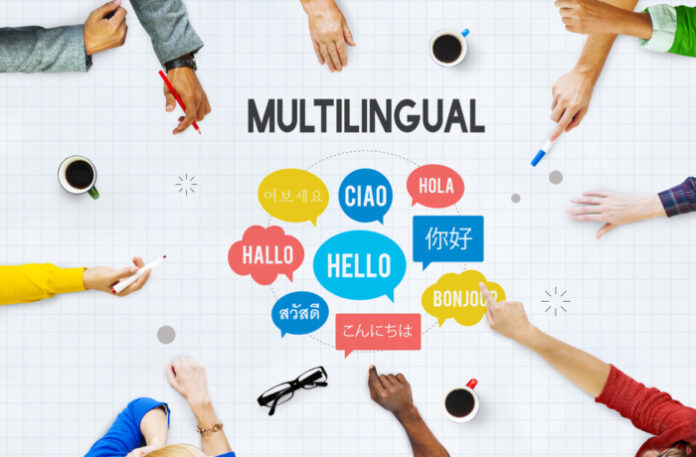In today’s globalized economy, businesses are increasingly tapping into new markets by targeting consumers worldwide. This is where multi-language marketing strategies come in. Expert Richard Rakowitz in New York, NY, says by developing campaigns that target multiple languages and cultures, businesses can reach a wider audience, expand their customer base, and ultimately boost sales. Take a closer look at why companies should implement multi-language marketing strategies.
The Basics of Multi-Language Marketing Strategies
Multi-language marketing strategies refer to the process of creating campaigns and materials to target multiple-language audiences effectively. This can include website content, social media posts, and video ads. When done correctly, this strategy can help businesses gain an edge over their competitors by reaching an even more significant customer base.
The Benefits for Businesses
Richard Rakowitz says businesses that utilize multi-language marketing strategies benefit in several ways. First, they can tap into new markets and reach customers who may not have been familiar with their products or services. Additionally, multi-language marketing allows companies to develop better relationships with their customers. They speak directly to their customers in their languages rather than simply relying on translation services or automated translation software. This also helps strengthen brand loyalty. Customers feel more connected and appreciated when companies try to reach out to them in their native language.
Furthermore, using different languages in marketing materials gives companies a chance to explore different cultural nuances that may give them an edge over the competition when it comes to engaging customers on a deeper level. For example, certain words or phrases may have different meanings in different cultures, which can be used to create more effective campaigns that speak directly to those audiences. Additionally, diverse cultural references can help companies stand out from the crowd and capture the attention of potential customers who might otherwise be overlooked.
Finally, utilizing multi-language marketing strategies helps businesses remain competitive by quickly adapting and responding to changes in customer preferences across multiple markets instead of focusing on one language group at a time. This flexibility allows companies to stay ahead of trends while keeping costs low since they don’t have to invest as much time or money into translating content for each market individually.
How to Implement Multi-Language Marketing Strategies
Implementing multi-language marketing strategies successfully requires a thoughtful and strategic approach. Here are some tips to get you started:
1. Research the language of your target market. This ensures that your materials are appropriately tailored to their needs and expectations.
2. Invest in native-speaking translators and cultural experts who can assist you with creating content that is both accurate and culturally relevant for each target market.
3. Use the right tools and technology to ensure your campaigns correctly translate into each language.
4. Develop a multi-language strategy that considers the different language preferences of each target market and any cultural nuances.
5. Finally, Richard Rakowitz says to test and monitor your campaigns across multiple languages and adjust accordingly based on customer feedback. This will help you refine your approach and create more effective campaigns.
By utilizing multi-language marketing strategies, businesses can gain competitive advantages and reach even larger customer bases than before. With the right tools and a thoughtful approach, companies can create successful campaigns that speak to customers in their languages and capture their attention in unique ways.
How to Handle Multi-Language SEO
When optimizing websites for multiple languages, it is essential to consider a few key points. To begin, create separate versions of your website for each language you plan to target. This helps to improve your search engine rankings and ensure that customers can easily navigate and find relevant content in their languages.
Additionally, create localized content for each language version of the site. Use appropriate meta tags, titles, and descriptions so that search engines can properly index the pages. Finally, use hreflang tags to help search engines determine which language version of the page to display for each user. This will help ensure that customers get the most relevant and accurate content.
What About Multi-Language Social Media?
Richard Rakowitz says multi-language social media strategies are also crucial for businesses looking to grow their customer bases and increase brand awareness internationally. You accomplish these by creating separate accounts for each language you are targeting and then customizing the content to fit the cultural nuances of each market.
In addition, ensure your messages accurately translate in each language to avoid issues. Also use social media analytics tools to track engagement across different language versions. This will help you better understand how customers respond to your campaigns and adjust your approach accordingly.
Final Thoughts
Implementing a successful multi-language marketing strategy requires careful planning and execution. However, its rewards are well worth the effort for any business looking for success on a global scale. By taking the time to research different cultures and target audiences across multiple languages, companies can ensure that their content resonates with prospective customers no matter where they are located. Ultimately, this results in increasing engagement rates and boosting sales potential along the way!
Find a Home-Based Business to Start-Up >>> Hundreds of Business Listings.















































